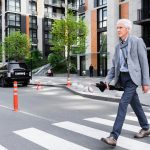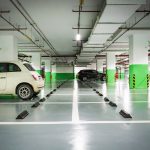Speed bumps are an effective traffic calming measure commonly used by municipalities to reduce vehicle speeds and enhance safety on residential streets. This article explores the purpose of speed bumps, the design considerations, evaluating their impact, and addressing concerns and challenges. By understanding the key takeaways from each section, municipalities can develop effective speed bump policies that meet the needs of their communities.
Key Takeaways
- Speed bumps play a crucial role in traffic calming and reducing vehicle speeds.
- Implementing speed bumps can bring various benefits, including improved pedestrian safety and reduced accidents.
- Choosing the right locations for speed bumps requires considering factors such as traffic volume, road geometry, and community input.
- Different types of speed bumps, such as speed humps and speed tables, have unique characteristics and suitability for different road conditions.
- Designing effective speed bumps involves considering factors like height, width, and visibility, as well as incorporating proper signage and markings.
Understanding the Purpose of Speed Bumps
The Role of Speed Bumps in Traffic Calming
Speed bumps play a crucial role in traffic calming efforts. They are designed to slow down vehicles and create a safer environment for pedestrians and other road users. By forcing drivers to reduce their speed, speed bumps help to reduce the risk of accidents and promote responsible driving.
Implementing speed bumps can have several positive effects. Firstly, they can effectively reduce the speed of vehicles in areas where speeding is a concern. This is especially important in residential areas and near schools, where the safety of pedestrians is a top priority. Secondly, speed bumps can help to discourage cut-through traffic, as drivers may choose alternative routes to avoid the inconvenience of navigating over the bumps.
When deciding on the locations for speed bumps, it is important to consider various factors. These include the volume and speed of traffic, the presence of pedestrian activity, and the proximity to schools or other sensitive areas. By carefully selecting the right locations, municipalities can maximize the effectiveness of speed bumps in calming traffic and improving road safety.
Benefits of Implementing Speed Bumps
Implementing speed bumps in residential areas can provide several benefits:
- Improved Safety: Speed bumps effectively reduce vehicle speeds, making the streets safer for pedestrians, cyclists, and other road users.
- Traffic Calming: Speed bumps help to calm traffic and discourage speeding, creating a more peaceful and livable neighborhood.
- Reduced Accidents: By slowing down vehicles, speed bumps can help reduce the number and severity of accidents, especially in areas with high pedestrian activity.
Tip: When implementing speed bumps, it is important to consider the appropriate height and spacing to achieve the desired traffic calming effect without causing discomfort to drivers.
- Enhanced Walkability: Speed bumps can encourage walking and active transportation by creating a safer environment for pedestrians.
- Improved Quality of Life: By reducing speeding and improving safety, speed bumps contribute to a higher quality of life for residents in the community.
Considerations for Choosing the Right Locations for Speed Bumps
When choosing the right locations for speed bumps, there are several important considerations to keep in mind:
- Traffic Volume: It is crucial to assess the volume of traffic in the area. Speed bumps should be placed in locations with high traffic flow to effectively slow down vehicles.
- Proximity to Schools and Residential Areas: Speed bumps can be particularly beneficial near schools and residential areas where pedestrian safety is a top priority.
- Road Design: The design of the road should be taken into account. Speed bumps should be placed on straight sections of the road, avoiding curves or intersections.
Tip: Conducting a thorough traffic analysis and consulting with traffic engineers can help identify the most suitable locations for speed bumps.
- Emergency Vehicle Access: It is important to consider the impact of speed bumps on emergency vehicle access. Speed bumps should be strategically placed to minimize any potential delays for emergency vehicles.
- Community Input: Seeking input from residents and drivers in the community can help address concerns and ensure that speed bumps are placed in locations that are widely supported.
- Maintenance and Cost: The cost of installation and maintenance should also be considered when choosing the locations for speed bumps.
Designing Effective Speed Bumps
Types of Speed Bumps and Their Characteristics
Speed bumps come in various types, each with its own characteristics and advantages. Here are some common types of speed bumps:
- Speed Humps: These are wider and flatter than traditional speed bumps, allowing vehicles to pass over them at higher speeds. They are effective in reducing speed and are often used in residential areas.
- Speed Cushions: These are raised platforms with gaps that allow larger vehicles, such as emergency vehicles and buses, to straddle them while still slowing down smaller vehicles. They are designed to minimize the impact on traffic flow.
- Speed Tables: These are longer and wider than speed humps, providing a more gradual change in speed. They are commonly used in areas where pedestrian safety is a concern.
Tip: When choosing the type of speed bump to implement, consider the specific needs of the location and the desired level of traffic calming.
It is important to carefully evaluate the characteristics of each type of speed bump and select the most appropriate one for the intended purpose. Factors such as traffic volume, speed limits, and road conditions should be taken into account when making this decision.
Factors to Consider in Designing Speed Bumps
When designing speed bumps, there are several factors that need to be taken into consideration:
- Traffic Volume: The amount of traffic on the road should be analyzed to determine the appropriate size and spacing of speed bumps. Higher traffic volumes may require smaller and more frequent speed bumps to effectively slow down vehicles.
- Road Design: The layout and design of the road should be considered when placing speed bumps. Factors such as curves, intersections, and pedestrian crossings should be taken into account to ensure the speed bumps are placed in locations that maximize their effectiveness.
Tip: Avoid placing speed bumps near sharp curves or intersections as they can create safety hazards.
- Speed Limit: The speed limit of the road should be considered when designing speed bumps. The height and length of the speed bumps should be appropriate for the speed limit to ensure they effectively reduce vehicle speeds.
- Drainage: Proper drainage should be considered when designing speed bumps. Speed bumps should not impede the flow of water on the road to prevent flooding or damage to the speed bumps.
- Accessibility: Speed bumps should be designed to be accessible for all road users, including pedestrians, cyclists, and individuals with disabilities. Considerations should be made to ensure the speed bumps do not create barriers or hazards for these users.
- Maintenance: The ease of maintenance should be considered when designing speed bumps. Speed bumps should be designed to be durable and easy to repair or replace when necessary.
Tip: Regular inspections and maintenance should be conducted to ensure the speed bumps are in good condition and functioning effectively.
Best Practices for Installation and Maintenance
When it comes to the installation and maintenance of speed bumps, there are several best practices that municipalities should follow:
- Conduct a thorough analysis of the road and traffic conditions before installing speed bumps. This will help determine the appropriate type and placement of the bumps.
- Ensure that speed bumps are clearly marked with signage and road markings to alert drivers in advance.
- Regularly inspect and maintain speed bumps to ensure they are in good condition and functioning effectively.
- Monitor the impact of speed bumps on traffic flow and make adjustments if necessary.
- Communicate with residents and drivers about the purpose and benefits of speed bumps to address any concerns or resistance.
Following these best practices will help ensure that speed bumps are installed and maintained in a way that effectively improves traffic safety and reduces speed in residential areas.
Evaluating the Impact of Speed Bumps
Measuring the Effectiveness of Speed Bumps
Measuring the effectiveness of speed bumps is crucial in evaluating their impact on traffic calming. There are several key metrics that can be used to assess the effectiveness of speed bumps:
- Vehicle Speed Reduction: One of the primary goals of speed bumps is to reduce vehicle speeds. By measuring the average speed of vehicles before and after the installation of speed bumps, municipalities can determine the extent to which speed bumps are effective in slowing down traffic.
- Traffic Volume: Monitoring the volume of traffic on roads with speed bumps can provide insights into whether the presence of speed bumps has led to a decrease in traffic flow.
- Driver Compliance: Assessing the level of driver compliance with speed limits and speed bump regulations can indicate the effectiveness of speed bumps in influencing driver behavior.
Tip: Regular monitoring and analysis of these metrics can help municipalities make informed decisions about the design and placement of speed bumps.
Assessing the Impact on Traffic Flow
Assessing the impact of speed bumps on traffic flow is crucial to ensure that they are effective in achieving their intended purpose. Here are some key considerations:
- Conduct a before-and-after study to compare traffic flow data. This can include measuring average vehicle speeds, traffic volume, and congestion levels.
- Analyze the impact on travel times for both local and through traffic. It is important to evaluate if the presence of speed bumps significantly increases travel times, especially for emergency vehicles.
- Consider the effect on driver behavior. Speed bumps should encourage drivers to slow down, but they should not cause abrupt braking or erratic lane changes.
- Evaluate the impact on nearby intersections. Speed bumps may affect the flow of traffic at intersections, and adjustments may be necessary to maintain smooth traffic flow.
- Monitor feedback from residents and drivers. Their input can provide valuable insights into the effectiveness of speed bumps and any unintended consequences.
Tip: Regular monitoring and evaluation of the impact on traffic flow can help municipalities make informed decisions about the placement and design of speed bumps.
Evaluating the Impact on Vehicle Wear and Tear
When evaluating the impact of speed bumps on vehicle wear and tear, it is important to consider several factors. Friction is a key element that affects the wear and tear of vehicles. Speed bumps with high friction can cause increased wear on tires and suspension systems. Additionally, the height and shape of the speed bumps can also contribute to the impact on vehicle wear and tear.
To assess the impact on vehicle wear and tear, municipalities can consider the following:
- Conducting regular inspections of speed bumps to identify any signs of damage or excessive wear.
- Monitoring vehicle maintenance records to track any increase in repairs related to speed bump impact.
- Gathering feedback from drivers and residents regarding their experiences with vehicle wear and tear.
Tip: Regular maintenance and repairs of speed bumps can help minimize the impact on vehicle wear and tear.
By carefully evaluating the impact on vehicle wear and tear, municipalities can make informed decisions about the design and maintenance of speed bumps to ensure the longevity of vehicles and minimize unnecessary costs.
Addressing Concerns and Challenges
Addressing Noise and Vibration Concerns
Noise and vibration are common concerns associated with the installation of speed bumps. Municipalities should take steps to minimize these effects and ensure the comfort and safety of residents and drivers.
One approach to address noise and vibration concerns is to use rubberized speed bumps. These speed bumps are made of materials that absorb and dampen vibrations, resulting in reduced noise levels. Rubberized speed bumps are particularly effective in areas where noise pollution is a significant concern, such as residential neighborhoods.
In addition to using rubberized speed bumps, municipalities can also implement other measures to mitigate noise and vibration. These measures include:
- Proper installation: Ensuring that speed bumps are installed correctly and securely can help minimize noise and vibration.
- Regular maintenance: Regular inspections and maintenance can identify and address any issues that may contribute to increased noise and vibration.
By implementing these measures, municipalities can effectively address noise and vibration concerns associated with speed bumps and create a more comfortable environment for residents and drivers.
Mitigating Potential Negative Effects on Emergency Vehicles
Emergency vehicles play a critical role in ensuring the safety and well-being of the community. While speed bumps are effective in reducing vehicle speeds and improving overall traffic safety, it is important to consider their potential negative effects on emergency vehicles.
Emergency response time is a crucial factor that needs to be taken into account when designing speed bump policies. The presence of speed bumps can slow down emergency vehicles, potentially delaying their response to critical situations. To mitigate this issue, municipalities should consider the following:
- Strategic placement: Speed bumps should be strategically placed in areas where emergency vehicle access is less frequent, such as residential neighborhoods with low emergency call volumes.
- Alternative routes: Identifying and designating alternative routes for emergency vehicles can help minimize the impact of speed bumps on response times.
It is essential to strike a balance between traffic calming measures and ensuring timely emergency response. Municipalities should work closely with emergency service providers to develop speed bump policies that prioritize both public safety and emergency vehicle access.
Dealing with Resistance from Residents and Drivers
Resistance from residents and drivers is a common challenge when implementing speed bump policies. It is important to address their concerns and provide clear communication to ensure a smooth transition. Here are some strategies to consider:
- Engage the community: Involve residents and drivers in the decision-making process by seeking their input and feedback. This can help build trust and understanding.
- Educate about the benefits: Clearly communicate the reasons for implementing speed bumps, such as improving safety and reducing speeding. Highlight the positive impact they can have on the community.
- Address specific concerns: Take the time to listen to residents’ and drivers’ concerns and address them individually. This can help alleviate fears and misconceptions.
Tip: Providing examples of successful speed bump implementations in other communities can help demonstrate their effectiveness and alleviate concerns.
- Monitor and evaluate: Regularly assess the impact of speed bumps and gather feedback from residents and drivers. This ongoing evaluation can help identify any issues and make necessary adjustments.
- Maintain open communication: Keep residents and drivers informed about any updates or changes to the speed bump policies. This transparency can help maintain trust and address any new concerns that may arise.
Conclusion
In conclusion, designing effective speed bump policies for municipalities is crucial for ensuring the safety of both pedestrians and drivers. By considering factors such as location, design, and communication, municipalities can create speed bump policies that effectively reduce speeding and improve road safety. It is important to strike a balance between slowing down traffic and minimizing inconvenience for drivers. Collaboration between traffic engineers, urban planners, and community members is key to developing policies that meet the needs of all stakeholders. With careful planning and implementation, municipalities can create a safer and more livable environment for everyone.
Frequently Asked Questions
1. Are speed bumps effective in reducing speeding?
Yes, speed bumps are an effective tool for reducing speeding. They force drivers to slow down and navigate carefully, reducing the overall speed of vehicles in the area.
2. Do speed bumps damage vehicles?
When designed and installed properly, speed bumps should not cause significant damage to vehicles. However, excessive speed or poorly designed speed bumps can potentially cause damage to vehicles.
3. Can speed bumps be used on all types of roads?
Speed bumps are typically used on low-speed residential roads and parking lots. They may not be suitable for high-speed roads or areas with heavy traffic.
4. Do speed bumps affect emergency vehicles?
Speed bumps can affect the response time of emergency vehicles. However, proper planning and design can minimize the impact on emergency vehicle operations.
5. How are speed bumps maintained?
Regular maintenance is required to ensure the effectiveness and safety of speed bumps. This includes inspecting for damage, repairing any issues, and keeping the surrounding area clean.
6. Can speed bumps be removed if they are not effective?
Yes, if speed bumps are found to be ineffective or causing more problems than benefits, they can be removed. However, careful evaluation should be conducted before making a decision to remove them.









